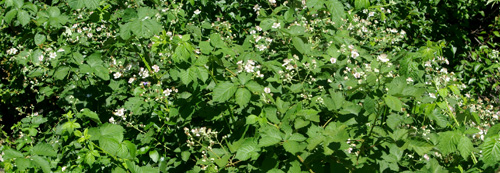
For three summers now I’ve relished building a profitable relationship with a wild blackberry that insists on growing up through a nandina planted on a sunny side of the house. Fearful of what it might do should it get out of hand, I have religiously cut it back at the end of each season, and thus far it has been an abundant producer with only minor hazards. However, the slightest research into actually IDing this generous gift does put one on guard, for apparently it is the much “reviled” Himalayan blackberry (Rubus armeniacus), also known as Armenian blackberry, introduced to California (and adjoining states, to their great detriment and consternation) by none other than our beloved Luther Burbank. Ahem. Mr. Burbank apparently spotted an ad for the seeds in an “Indian seed catalogue” in 1885 and ordered them, planted them and proceeded to regale everyone with stories of their deliciousness and their enormous vigorous benefits. Guessing the ancestors of those who listened would like to give Mr. Burbank a piece of their mind along with a delicious piece of blackberry pie. It’s now regarded as one of the biggest invasives along the Pacific Northwest, with little chance of changing that, as anything that would do damage to them (short of digging them up, an overwhelming and thankless task) would also do damage, inevitably, to viable commercial blackberry cousins. The Good Ones.
And I have one of those, too. 🙂
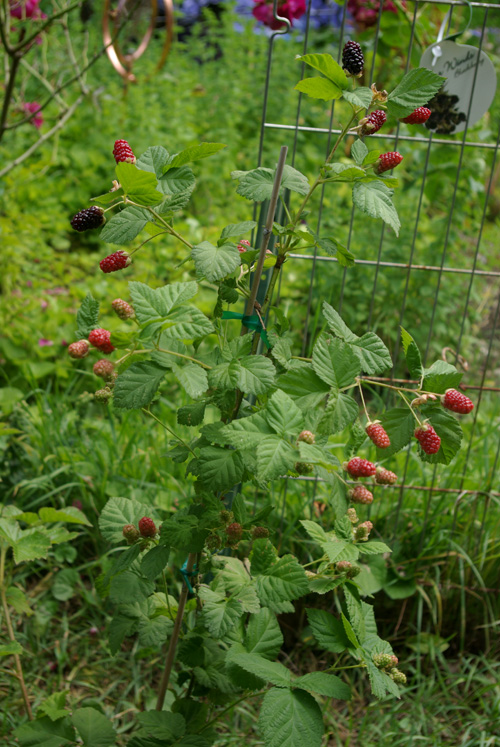
My good and proper and well behaved blackberry
This guy, which I also love, came from Home Depot and the sign on it says it came from a place called Four Winds. I called Four Winds and the person I spoke with says it actually came from Oregon, one of the blackberry capitals of the world. Four Winds’ website says they sell three kinds of blackberries: Ollalie, Black Satin Blackberry and Triple Crown Blackberry and no amount of research led me to any conclusions which one I now own and care for and enjoy. So I’ll stick with calling it The Good One.

It’s very delicious. It has only minimal prickles. (You are not supposed to call the wicked sticky things thorns in blackberry land, even though apparently the blackberry is related to the rose.) And I can tell it won’t grow crazily out of control, though it does have a large new cane. However I am also noticing that while I can still lay claim to a small number of early blackberries each day, I don’t see any flowers (mid-June), so I’m guessing the fruiting season is quite limited. And meanwhile….(ta da!):
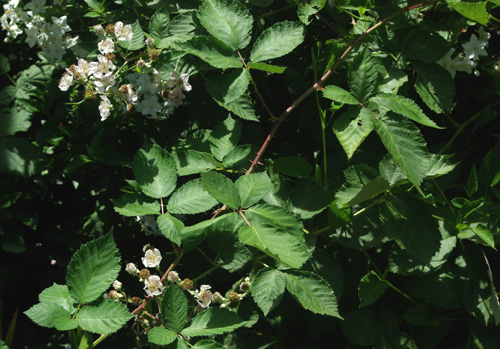
My Bad Boy, the Himalayan blackberry (and p.s., no one in California calls this Armenian)
See the nandina flowers growing among my fruity flowers? Yep. It’s a wild affair, I’ll tell ya’.

Lovely blackberry flowers
One of the canes is reaching onto the front porch. I’m glad, actually, as once a cane touches the ground it can use it to spread. Not much chance on cement. 🙂 Not stopping a friendly bee who came by to help with pollination, however.

Contrary to my Good and Proper Blackberry, my Naughty Himalayan is bursting with hundreds of flowers and each one will reliably produce a delicious blackberry. I’m thinking of the many fantastic healthy cool scrumptious smoothies I made last summer. Each morning I would go out and harvest just enough for a smoothie or two, and give thanks for the handful of blessings that renegade vine produced, that became my breakfast. Thank you. Thank you. So grateful. And here’s some of what it provided me:
Nutrients in raw blackberries
Nutrient Value per 100 grams % Daily Value
Energy 43 kcal
Fiber, total dietary 5.3 g 21%
Sugars, total 4.9 g
Calcium, Ca 29 mg 3%
Magnesium, Mg 20 mg 5%
Manganese, Mn 0.6 mg 32%
Copper, Cu 0.2 mg 8%
Potassium, K 162 mg 5%
Sodium, Na 1 mg 0%
Vitamin C, total ascorbic acid 21 mg 35%
Vitamin A, IU 214 IU 4%
Vitamin K, 25%
Folic acid, 9%
Carotene, beta
Lutein + zeaxanthin
You can imagine my joy!
Love and gardening blessings,
Kathryn xoxoo
Book Notes: A review of Plant Whatever Brings You Joy will appear in July/August issue of California Country. Meanwhile, the Dutch issue of Ode Magazine arrived with the translated excerpt from my book and that was quite a thrill! I am also delighted to let folks know that both the wonderful Mendocino Art Center and much loved Mrs. Dalloway’s in Berkeley are making the book available! Thank you!
Posted on June 17th, 2011 by Kathryn
Filed under: Plants
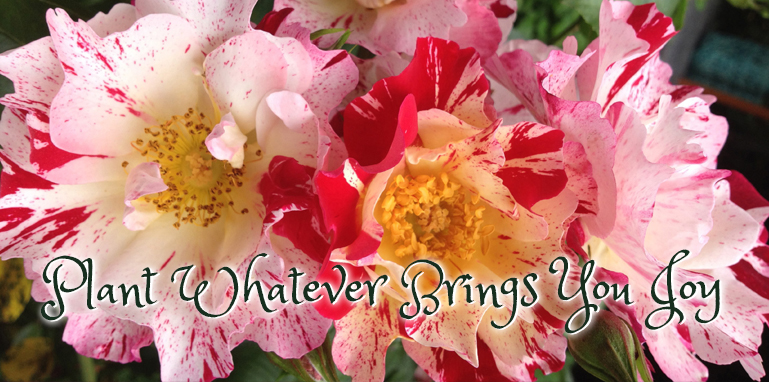










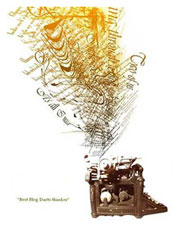
more puzzles just the right size. enjoy the summer. love, Rose
hi kathryn, so much interesting info on the lovely old-fashioned blackberry i know and love and hate and everything in between….but it is one of the best for the good old delicious blackberry from my experience…. we don’t have as many up here 1000′ above sea level as we did out by the coast but still we have a good stand of them and would NOT consider even trying to eliminate them….the deer are good to keep them back as are the cattle but you are right, there are more dainty and manageable ones than the type you call “armenian” or himalayan, that i have heard them called-nope, not armenian! interesting info i can now regale husband with. 😉 thanks. xx
Hi, Rose, Enjoy and thank you! Love, Kathryn
Hi, Linda! Yes, locals will surely have lots of experience with our wild blackberries, and surely a love/hate relationship, as you indicate. But above all a fun adventure to capture their deliciousness to add to our kitchen fare!
Kathryn xooxo
Hi Kathryn, I like your blog, just discovered it.
I heard on a local gardening show this spring that we’re not supposed to plant summer vegetables and tender annuals until the blackberries bloom. So they are really good for something, besides pie and taking over the world.
When my grandfather was in his late 80s, he told me the story of his life. (And how stupid I was to not go inside right away and write it down.) But one thing I’ve always remembered. He planted the blackberries on this hill – way down at the bottom, far away from the house, on land he had sold long ago.
He said, “Everybody told me not to, but I said ‘I’m young and strong and I can grub them out.’ ” He was laughing at himself when he told me that story.
When I came here, in ’81, he’d been gone for several years, and the blackberries had eaten half of the old family orchard, half of the remaining several acres. And now I’m not young and strong anymore – and the blackberries have taken over gardens, and are working on the lawns and reaching the house.
Hi, Mina W! That’s quite a story! You have Luther Burbank to thank, as well! Yes, I read some horror stories like that in researching this post. They also dry out, become impenetrable and catch fire, allowing the canopies of trees to enflame. Serious problem! Hope you get some help with that soon! Goats?? Kathryn xoox
Hi Kathryn!
It looks like you are having a great time with your naughty little Himalayans.
Sounds like you had better keep it under control, since it’s right next to your house!
Loved the post, andI always appreciate what you share with us about your world in beautiful California.
We have raspberries and black caps (coloquialism for black berries) in our neck of the woods too.
My favorite is the blackberry, followed by Marion berries. .
Can you grow Marion berries there? They are such a lushious treat as well.
You’re the best!
Lori
Hi, Lori! Wondering if your raspberries are wild…I don’t know Marion berries.
They might be here and I’m unaware. I should do a thorough study of al the berries that grow wild in California. The blackberries are everywhere and part of our summer landscape, so we are all so familiar with those. Glad you are enjoying the blog. 🙂 Kathryn xoxo
We do have a wild blackberry here in Ohio, some call it a huckleberry. There are actually a few slight variations that I’ve seen. More common to Ohio & indiana is the wild black raspberry which is spread by birds and taste wonderful hot from the sun. They also seem to be very hardy & do not fall ill to many of the ailments of the cultivated raspberry. Yes, they are roses. All branbles are roses, as are strawberries and all cinquefoils (5 petals) as well as the stone fruit (cherries, peaches, plums, etc) and apples & pears. One of the oldest living historical plant families, back to the Cretacious. Enjoy them! Hugs.
Hi, Julie! I see I have a lot to learn about wild berries! “All brambles are roses” is a good thing to remember. Thank you, as ever, for your wide and deep input. So appreciated! Kathryn xoxo
Super cute, informative post, mom. It’s a Lovely wild affair! The Himalayan variety conjures images of many Summers gone by, the violet stained fingers and hopes to pick enough for a pie.. 🙂
Love,
Antonia
xoxo
Hi, Antonia! Yes! 🙂 Didn’t we make the rounds?? 🙂 And we always managed to come up with a pie, I do believe! Love, Mom xoxo
Wonderful post on blackberries! Growing up in North Carolina, we picked the wild ones (and the chiggers picked us).
Freda Cameron
Wow. Hi, Cameron! I missed the blackberries when I lived in NC! (Also missed the chiggers, apparently!) Glad you enjoyed the post. Kathryn xoxo